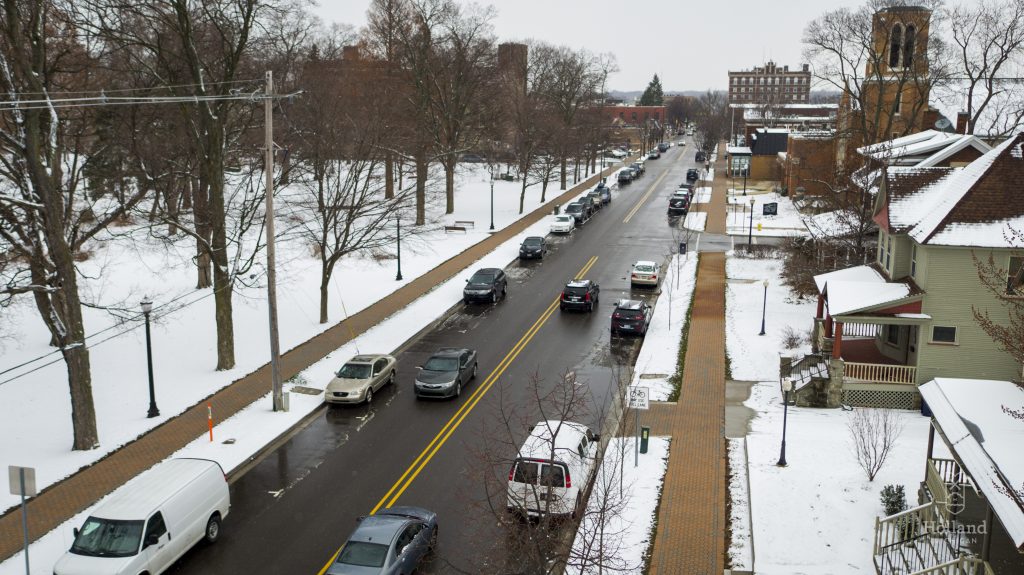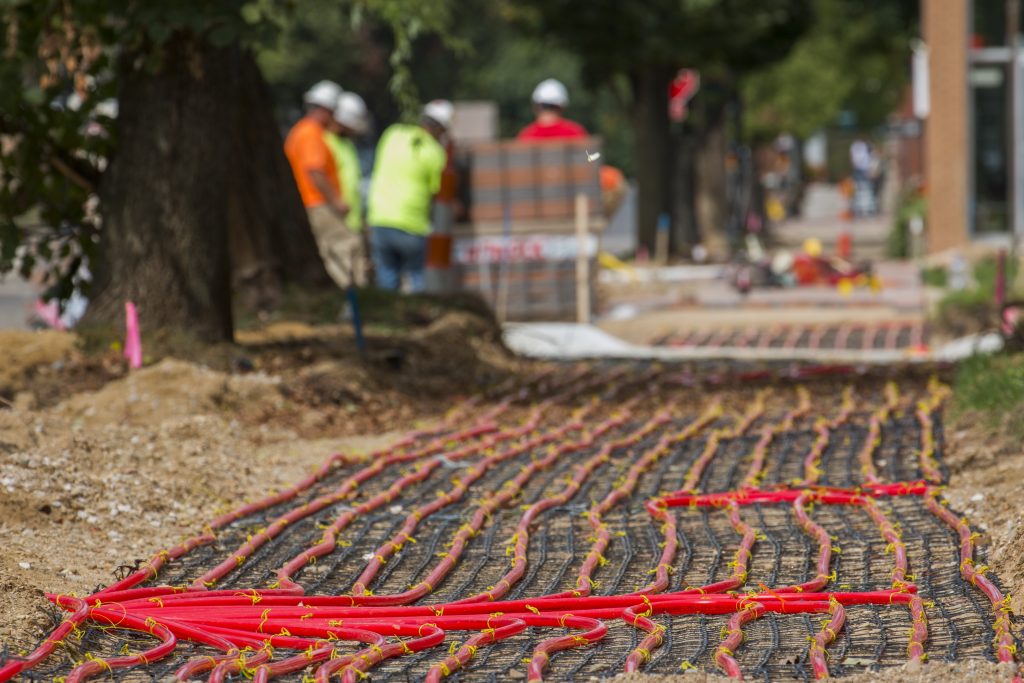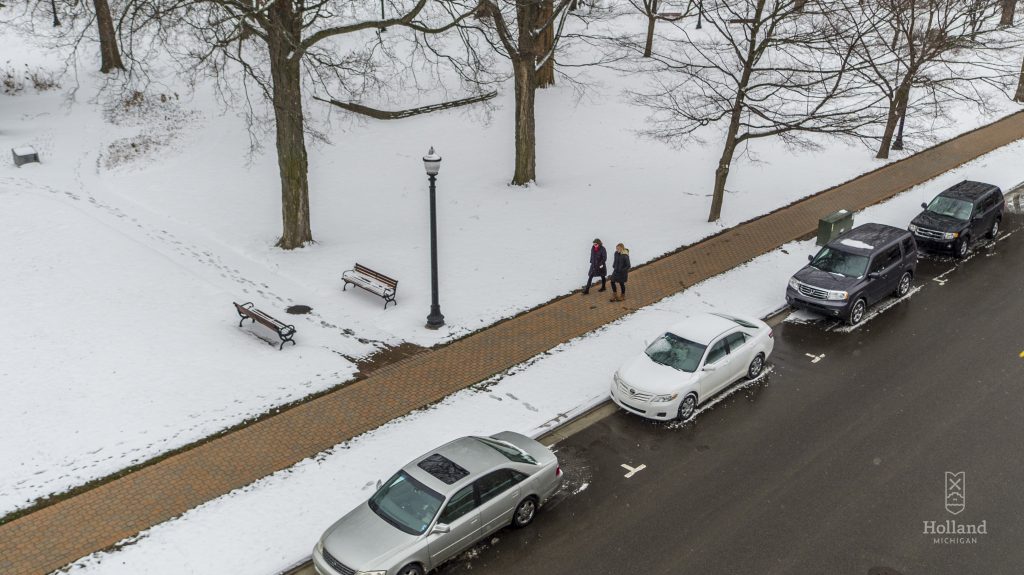By Marianne Manderfield, City of Holland
Shoppers love it, and downtown business owners enjoy that it helps keep their entryways clean. It makes walkers and runners feel steady on their feet regardless of the conditions outside. It works so well that visitors may not even realize what is happening beneath the sidewalk they are navigating. And no salt or plows are necessary.
This is none-other than Holland’s snowmelt system, from which residents and visitors have been reaping benefits since 1988. Snowmelt sets downtown apart from other communities along the lakeshore and beyond.
The City of Holland boasts the largest municipally owned snowmelt system in North America.
Holland Board of Public Work’s power generation facility, Holland Energy Park, is the force behind the mechanics and magic of this impressive downtown infrastructure.
The original installment in 1988 was three city blocks, and since then, the system has had three major expansions in 2005, 2007 and 2015-16. Today, Holland’s downtown has just over five miles of snowmelt. It covers the farmers’ market area near the Civic Center, plus sidewalks to Herrick District Library, police department, several parking areas, and along Central Avenue to 20th Street.
The snowmelt system uses waste heat from power generation at Holland Energy Park, making it very cost effective and energy efficient. What would normally be waste thermal energy is captured to heat water, which is circulated through almost 200 miles of tubing beneath the sidewalks and streets in Holland.
The system can pump more than 5,500 gallons of water per minute at a temperature of 95 degrees Fahrenheit, and is able to melt about one inch of snow per hour at 20 degrees with winds of 10 mph – or what we call “regular winter conditions” here in Holland. The 95-degree water heats the sidewalks and pavement to about 42 degrees to prevent freezing conditions and snow accumulation; instead, it melts and seeps underneath the pavement to help alleviate stormwater runoff.
The snowmelt system is a closed-loop system, meaning it circulates the same water over and over again. The water comes back to the Energy Park at about 75 degrees and provides input to a heat pump, which is used to heat the Civic Center and the administrative areas of the Energy Park, similar to a district heating system.
Winters can be harsh in West Michigan, but thanks to Holland’s snowmelt system, they are a bit easier to handle in downtown Holland.
More information on Holland’s snowmelt system is available at snowmelt.cityofholland.com, including a map of where snowmelt is in place, and readers can get a live look at Downtown Holland via the MiHollandCAM.
Marianne Manderfield is public information coordinator for the City of Holland.
This Week’s Sustainability Framework Theme
Community & Neighborhood: The places we live and the individuals we interact with support the development of our personalities and perspectives on life. Encouraging vital and effective communities is essential.
ABOUT THIS SERIES
Living Sustainably is a collection of community voices sharing updates about local sustainability initiatives. It is presented by the Holland-Hope College Sustainability Institute, a joint project of Hope College, the City of Holland and Holland Board of Public Works. Go to www.hope.edu/sustainability-institute for more information.




